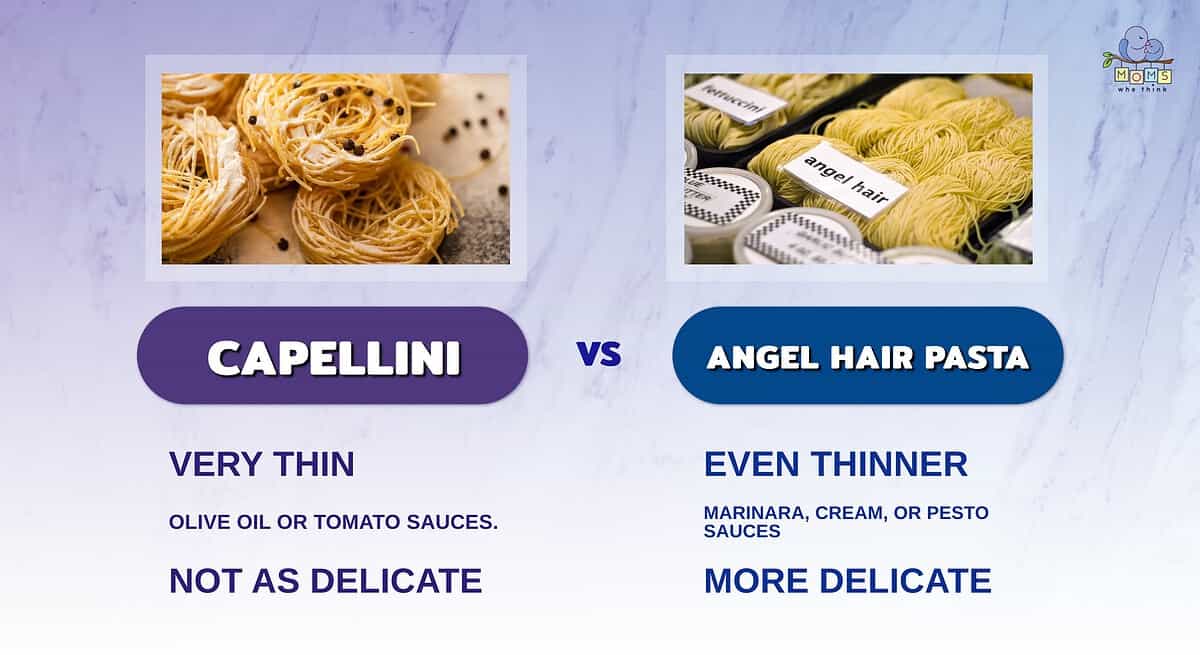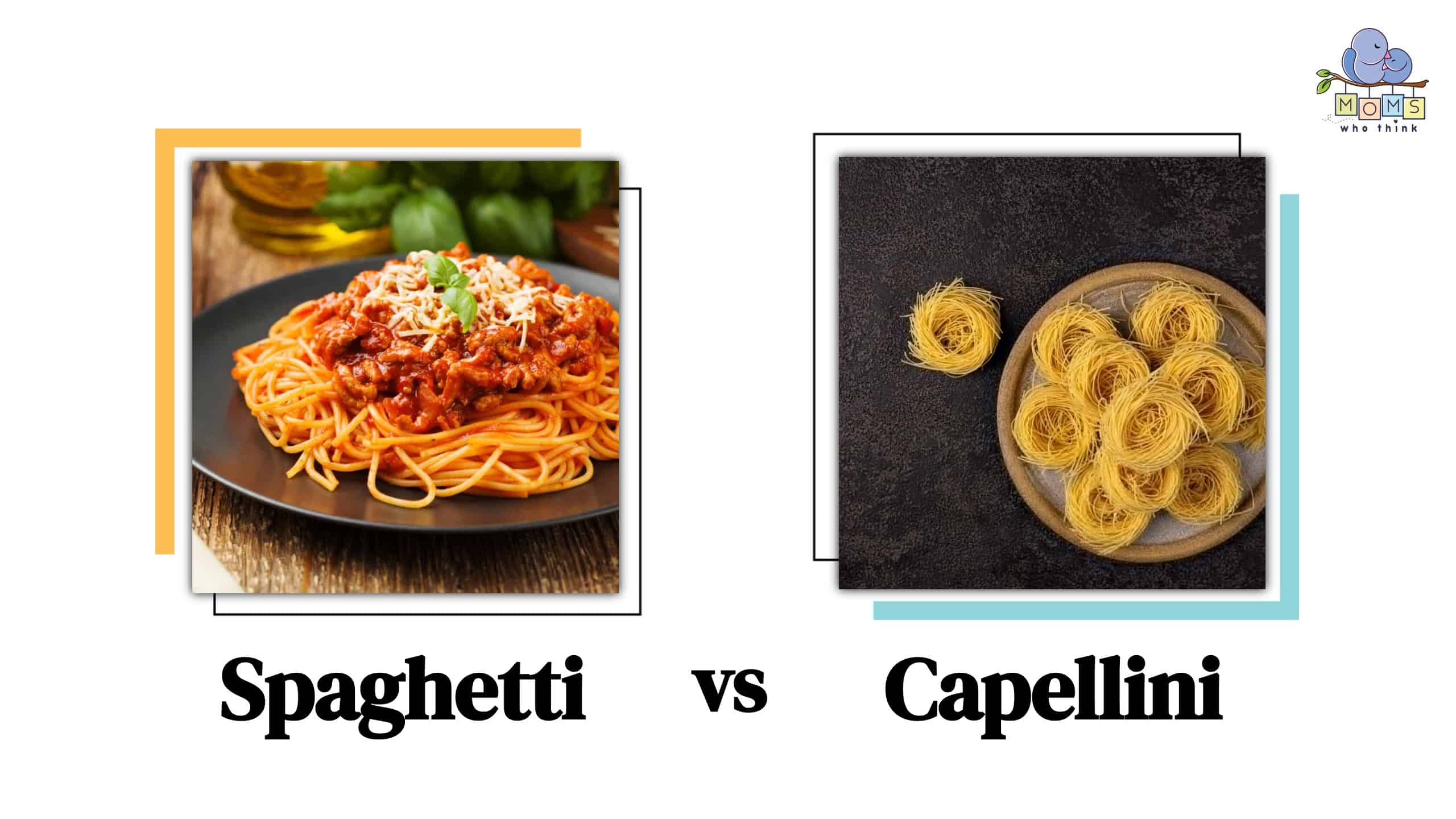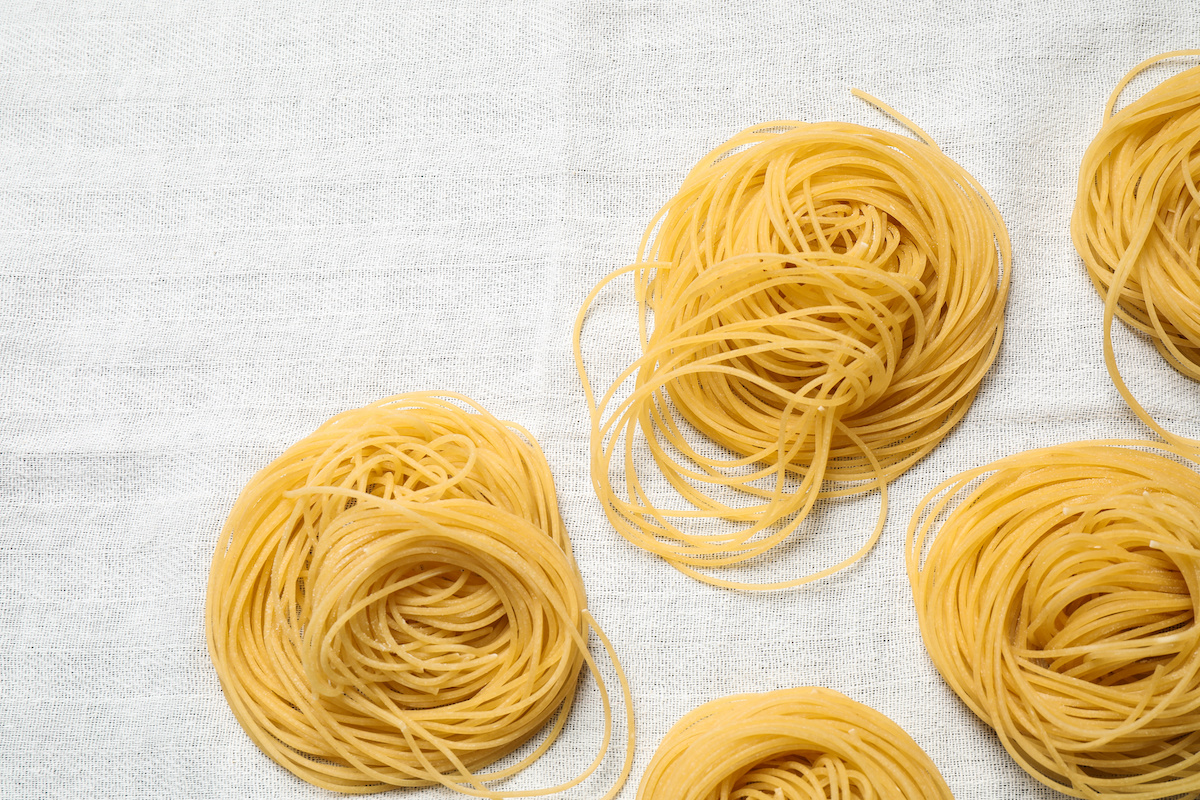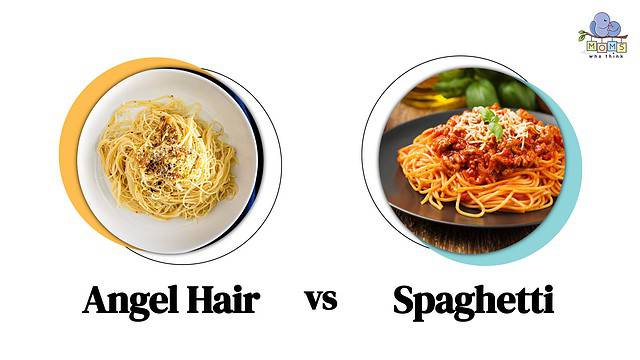Capellini Pasta

Capellini pasta, also known as “angel hair,” is a thin, delicate pasta variety that originates from Italy. With a diameter slightly thicker than angel hair pasta, capellini provides a delicate yet slightly more substantial mouthfeel when cooked. It is often considered one of the thinnest types of pasta available, making it ideal for dishes that require a light and delicate touch.
One of the defining characteristics of capellini pasta is its quick cooking time. Due to its thinness, capellini cooks in just a few minutes, making it a popular choice for busy cooks and those seeking a fast and convenient meal. Its slender strands easily absorb the flavors of accompanying sauces, making it a versatile pasta choice for a wide variety of dishes.
Capellini pasta pairs well with light and delicate sauces, such as olive oil and garlic, butter and lemon, or a simple tomato and basil sauce. It is also commonly used in seafood dishes, where its delicate texture allows the flavors of shellfish and fish to shine through.
In summary, capellini pasta offers a delicate texture and quick cooking time, making it a popular choice for those seeking a light and flavorful pasta dish. Its versatility and ability to enhance the flavors of accompanying sauces make it a staple in many Italian-inspired recipes.
Capellini Pasta: Texture And Cooking Time
Capellini pasta, also known as “angel hair,” is appreciated for its unique texture and quick cooking time. With its thin and delicate strands, Capellini pasta offers a smooth and soft mouthfeel when cooked al dente. Its slender shape contributes to the pasta’s ability to absorb flavors and sauces, creating a harmonious taste experience.
When it comes to cooking time, Capellini pasta is incredibly fast to prepare. Due to its thinness, it cooks in a matter of minutes, making it a time-efficient choice for busy cooks or those looking for a quick and convenient meal option. This rapid cooking time also ensures that the pasta retains its delicate texture, avoiding any risk of becoming mushy or overcooked.
To achieve the perfect Capellini pasta, it is essential to keep a close eye on the cooking process. It is recommended to cook Capellini in a large pot of boiling salted water for around 2-3 minutes, or until it reaches the desired level of tenderness. It is crucial to remove the pasta from the boiling water promptly to prevent it from becoming too soft.
In summary, Capellini pasta offers a delightful texture that is both smooth and delicate. Its quick cooking time makes it a convenient option for those seeking a speedy meal without compromising on flavor and quality.
Capellini Pasta: Best Sauces To Pair With
Capellini pasta, with its delicate and thin strands, pairs perfectly with light and simple sauces that complement its texture and allow its flavor to shine. Here are some of the best sauces to pair with Capellini pasta:
- Garlic and Oil: A classic and simple combination, garlic and oil sauce enhances the delicate flavor of Capellini without overpowering it. Saute minced garlic in olive oil, and toss with cooked pasta, a sprinkle of red pepper flakes, and a touch of grated Parmesan.
- Lemon Butter: The bright and tangy flavors of a lemon butter sauce bring a refreshing element to Capellini pasta. Melt butter in a saucepan, add lemon juice and zest, and toss with cooked Capellini. Finish with a sprinkle of chopped parsley and grated Parmesan.
- Tomato Basil: Capellini pasta pairs well with a light tomato basil sauce. Saute fresh tomatoes, garlic, and basil in olive oil, and toss with cooked pasta. Finish with a sprinkle of grated Parmesan and a drizzle of balsamic glaze.
- Pesto: The vibrant flavors of pesto work wonders with Capellini pasta. Toss cooked pasta with a generous amount of pesto sauce, and finish with a sprinkle of toasted pine nuts and grated Parmesan.
Remember, the key is to choose sauces that enhance the delicate texture of Capellini pasta without overwhelming it. Experiment with different flavors and ingredients to find your perfect combination. Enjoy!
Angel Hair Pasta

Angel Hair Pasta is a popular pasta variety that originated in Italy. It is known for its thin, delicate strands that resemble angel hair, hence the name. Angel Hair Pasta is incredibly fine, even thinner than Capellini pasta, with a diameter ranging between 0.78 and 0.88 millimeters.
Due to its delicate nature, Angel Hair Pasta cooks quickly, typically taking only a few minutes to reach al dente perfection. It is important to carefully monitor the cooking time to avoid overcooking and ending up with mushy pasta.
Angel Hair Pasta is best paired with light and delicate sauces, as its thin strands can easily be overwhelmed by heavier or chunky sauces. Popular pairings include simple oil and garlic, lemon butter, or a light tomato basil sauce. Its delicate texture also makes it ideal for incorporating into seafood dishes and stir-fries.
In summary, Angel Hair Pasta is a fine and delicate pasta variety that cooks quickly and pairs well with light sauces and delicate ingredients. Its thin strands add a delicate texture to any dish, making it a versatile pasta option for a wide range of recipes.
Angel Hair Pasta: Origin And History
Angel Hair Pasta, also known as Capellini, has its origins deeply rooted in Italian cuisine. This fine and delicate pasta variety is believed to have originated in the southern regions of Italy, where pasta-making has been a culinary tradition for centuries.
The history of Angel Hair Pasta traces back to the early 14th century in Sicily, where pasta-making techniques were influenced by Arab culinary traditions. The thin strands of pasta were created by hand-rolling pasta dough until it reached a fine and delicate consistency, resembling the strands of angel hair.
Over time, Angel Hair Pasta gained popularity throughout Italy and eventually spread to other parts of the world. The pasta’s fine texture and quick cooking time made it a favorite choice for busy Italian households. Today, Angel Hair Pasta is enjoyed not only in Italy but also in various international cuisines.
Its delicate texture and ability to easily absorb flavors make Angel Hair Pasta a versatile choice for a variety of dishes. Whether it’s paired with a light and simple garlic and oil sauce or tossed with fresh seafood, Angel Hair Pasta continues to be a beloved pasta variety cherished for its delicate strands and rich culinary history.
Angel Hair Pasta: Cooking Techniques And Tips
Angel Hair Pasta is known for its delicate texture and quick cooking time, requiring some specific cooking techniques and tips to achieve a perfect result. Here are some guidelines to help you cook Angel Hair Pasta to perfection:
- Boiling Time: Angel Hair Pasta cooks very quickly, usually in just 2-3 minutes. It is important to keep a close eye on the cooking process to avoid overcooking the pasta and ending up with mushy strands.
- Salt and Water: Like any other pasta, make sure to cook Angel Hair Pasta in a large pot of salted boiling water. The salt enhances the pasta’s flavor as it absorbs into the pasta during cooking.
- Al Dente: To achieve the ideal texture, cook Angel Hair Pasta al dente, which means it should have a slight bite to it. Test the pasta a minute or two before the recommended cooking time to ensure it is not overcooked.
- Sauce Compatibility: Due to its delicate nature, Angel Hair Pasta pairs best with light, thin sauces, such as garlic and oil, marinara, or simple herb-based sauces. These sauces coat the pasta strands evenly without overpowering the delicate texture.
Remember to follow these cooking techniques and tips to enjoy a perfect bowl of Angel Hair Pasta, with each strand perfectly cooked to achieve its signature delicate texture.
Capellini Vs. Angel Hair: Diameter And Thickness Comparison

When comparing Capellini and Angel Hair pasta, one notable difference lies in their diameter and thickness. Capellini pasta, which translates to “little hairs” in Italian, has a diameter ranging from 0.85 to 0.92 millimeters. On the other hand, Angel Hair pasta is slightly thinner, with a diameter between 0.78 and 0.88 millimeters.
While the two pasta shapes are quite similar, the slight variation in thickness can affect the final dish. Capellini’s slightly thicker strands give it a bit more resilience and can hold up well to heavier sauces. Its texture is delicate, but it retains a slight chewiness.
In contrast, Angel Hair pasta’s thinner strands lend themselves to lighter, more delicate sauces. The thinness of the pasta allows the sauce to coat each strand evenly, enhancing the overall flavor experience. However, it is essential to cook Angel Hair pasta quickly to prevent overcooking and potential mushiness.
Ultimately, the choice between Capellini and Angel Hair pasta depends on personal preference and the desired dish. Both options offer their unique characteristics and can be versatile in various recipes.
Capellini Vs. Angel Hair: Taste And Mouthfeel Differences
Capellini and Angel Hair pasta may share similarities in their thin and delicate nature, but they do differ in taste and mouthfeel.
Starting with Capellini, its slightly thicker strands contribute to a slightly more substantial mouthfeel compared to Angel Hair. The thickness allows the pasta to retain a slight chewiness while still maintaining a delicate texture. Capellini’s slightly firmer bite pairs well with heavier, robust sauces, as it can hold its shape and provide a satisfying texture.
On the other hand, Angel Hair pasta’s ultra-fine texture lends itself to a more delicate eating experience. This thinness allows the pasta to cook quickly and evenly, resulting in a tender, silky mouthfeel. Angel Hair pairs exceptionally well with light, delicate sauces, as it absorbs the flavors and coats each strand evenly.
The taste of both Capellini and Angel Hair pasta is relatively mild, allowing the flavors of the accompanying sauce to shine. The choice between the two comes down to personal preference and the desired eating experience. Whether one prefers the slightly chewier texture of Capellini or the delicate silkiness of Angel Hair, both pasta varieties offer unique and enjoyable taste sensations.
Capellini Vs. Angel Hair: Best Dishes To Use Each In
When deciding between Capellini and Angel Hair pasta, it is essential to consider the best dishes to use each type in. While both pasta varieties can be used interchangeably in many recipes, their subtle differences in texture and thickness lend themselves better to certain dishes.
Capellini’s slightly thicker strands are perfect for rich and hearty sauces. Its ability to maintain a slight chewiness while still offering a delicate texture makes it a great choice for dishes like carbonara, bolognese, or creamy mushroom sauces. The thicker strands of Capellini can hold up well to these robust sauces, allowing the pasta to complement and balance the flavors.
On the other hand, Angel Hair pasta’s ultra-fine texture works wonders with light and delicate sauces. Its thinness allows it to absorb the flavors of sauces like garlic and olive oil, fresh tomato, or simple herb sauces. Angel Hair is also a fantastic choice for seafood dishes like shrimp scampi or lemon garlic butter pasta.
Ultimately, the best dish to use Capellini or Angel Hair in depends on personal preference and the desired flavor and texture profile. Chefs and home cooks alike can experiment with different sauces and ingredients to create unique and satisfying pasta dishes using either Capellini or Angel Hair.
Conclusion And Verdict: Capellini Vs. Angel Hair Pasta Debate

In conclusion, the debate between Capellini and Angel Hair pasta comes down to personal preference and the desired texture and flavor profile. While they are both thin and delicate pasta varieties, their slight differences in thickness and texture make them better suited for different types of dishes.
Capellini, with its slightly thicker strands, is ideal for rich and hearty sauces. Its ability to maintain a slight chewiness while still offering a delicate texture complements robust sauces like carbonara, bolognese, or creamy mushroom sauces.
On the other hand, Angel Hair pasta’s ultra-fine texture works wonders with light and delicate sauces. Its thinness allows it to absorb the flavors of sauces like garlic and olive oil, fresh tomato, or simple herb sauces. It is also a fantastic choice for seafood dishes like shrimp scampi or lemon garlic butter pasta.
Ultimately, the decision of whether to use Capellini or Angel Hair pasta depends on the specific dish and personal preference. Chefs and home cooks can experiment with both varieties to create unique and satisfying pasta dishes that suit their tastes. So go ahead, and let your culinary creativity take flight with either Capellini or Angel Hair pasta!
FAQ About Capellini Vs Angel Hair Pasta: Comparing Thin Pasta Varieties
Q: What is the main difference between Capellini and Angel Hair pasta?
A: The main difference lies in their thickness. Capellini is slightly thicker than Angel Hair pasta.
Q: Which pasta is more delicate in texture, Capellini, or Angel Hair?
A: Angel Hair pasta is considered more delicate and finer in texture compared to Capellini.
Q: How do Capellini and Angel Hair pasta differ in cooking time?
A: Angel Hair pasta cooks much faster than Capellini due to its finer texture, requiring less time to reach the desired al dente consistency.
Q: Are there any variations in the way Capellini and Angel Hair pasta are used in dishes?
A: While both types of pasta can be used interchangeably in recipes, Capellini is preferred for dishes with heavier sauces as it can hold up better, whereas Angel Hair pasta is ideal for lighter sauces and delicate flavors.
Q: In terms of origin, do Capellini and Angel Hair pasta come from the same culinary tradition?
A: Both Capellini and Angel Hair pasta originate from Italian cuisine, with Capellini hailing from Lombardy and Angel Hair pasta being associated with Naples and the surrounding region.
Q: Which pasta variety is better suited for cold dishes like pasta salads?
A: Angel Hair pasta is often preferred for cold dishes such as pasta salads due to its delicate texture and ability to absorb flavors well.

Madame Thai Cuisine is not just a restaurant; it’s a culinary journey through Thailand’s vibrant and diverse flavors. Our story began with a passion for sharing the authentic tastes of Thailand with the world. Situated in the heart of [location], Madame Thai Cuisine has been a beacon of Thai culinary excellence since [year of establishment]. Our commitment to using only the finest and freshest ingredients, combined with traditional cooking techniques, has earned us a reputation as a go-to destination for exquisite Thai dining.